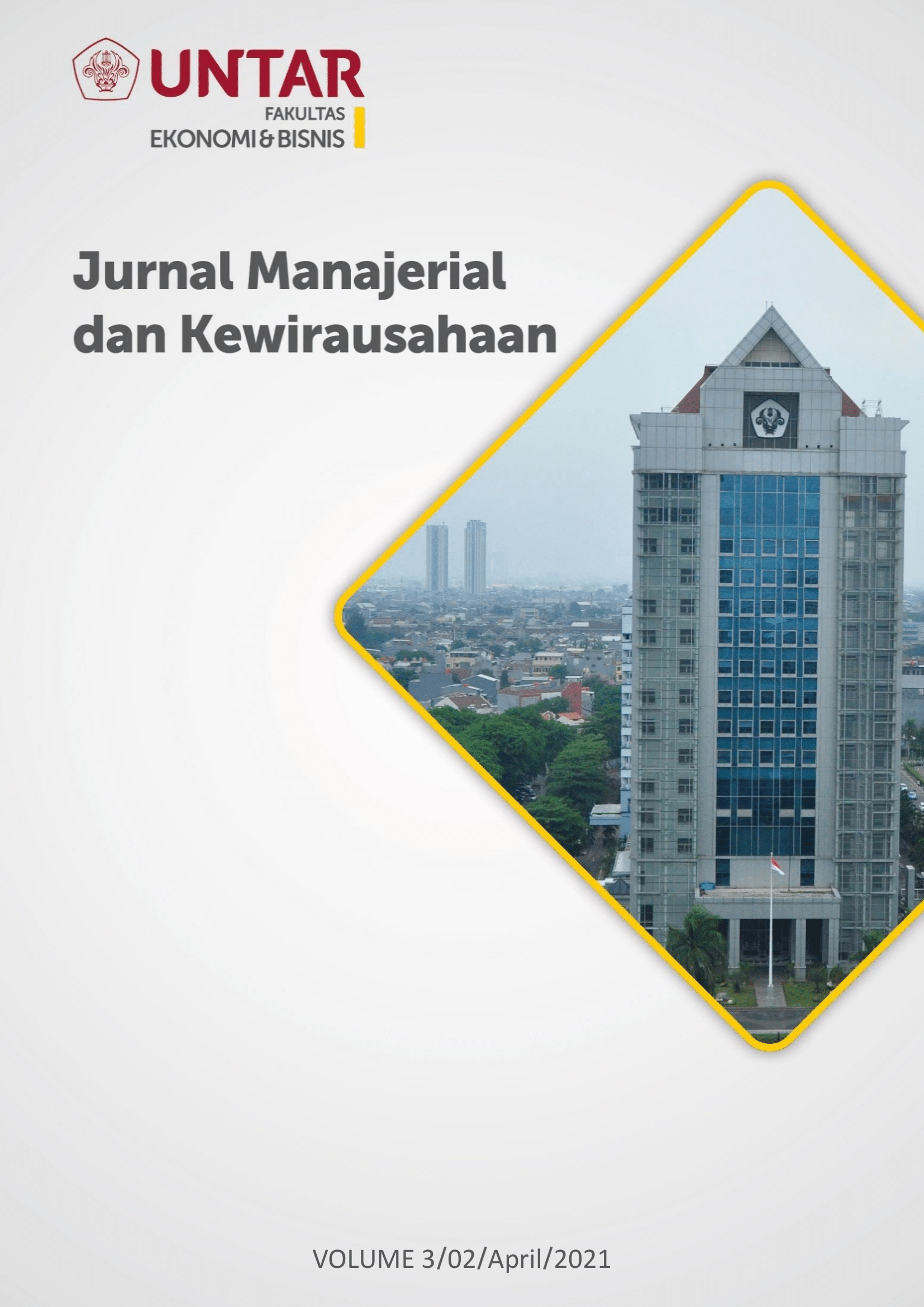Pengaruh Kesadaran Merek, Nilai Produk Dan Keunikan Merek Terhadap Loyalitas Merek Uniqlo Di Batam
Main Article Content
Abstract
The purpose of this study is to test whether brand awareness can influence brand loyalty, product value can affect brand loyalty, brand uniqueness can affect brand loyalty. Data analysis conducted in this study using SEM (Structural Equation Modeling), with the PLS measuring instrument. The sample was selected using convenience sampling method totaling 70 respondents. The results of this study are Brand Awareness, Product Value and Brand Uniqueness that are positive and significant towards brand loyalty.
Tujuan dari penelitian ini adalah untuk menguji apakah kesadaran merek dapat loyalitas merek, Nilai produk dapat mempengaruhi loyalitas merek, Keunikan merek dapat mempengaruhi loyalitas merek,. Analisis data yang dilakukan pada penelitian ini menggunakan SEM (Structural Equation Modeling), dengan alat ukur PLS. Sampel dipilih menggunakan metode convenience sampling berjumlah 70 responden. Hasil penelitian ini adalah Kesadaran Merek, Nilai Produk dan Keunikan Merek positif dan signifikan terhadap loyalitas merek.
Article Details
This work is licensed under a Jurnal Muara Ilmu Ekonomi dan Bisnis Creative Commons Attribution-ShareAlike 4.0 International License.,/p>
References
Aaker, D. A. (1991). Managing Brand Equity: Capitalizing on the Value of a Brand Name, The Free Press, New York, NY.
Aaker dan Keller. (2010). Consumer Evaluation of Brand Extension. Journal of Marketing, Vol. 54 (January 1990), 27-41.
Algesheimer, et al. (2005). The Social Influence of Brand Community: Evidence From European Car Clubs. Journal of Marketing, Vol. 69, 19-34.
Barnes, L., & Lea-Greenwood, G. (2006). Fast fashioning the supply chain: Shaping the research agenda. Journal of Fashion Marketing and Management: An International Journal, 10(3), 259–271.
Butz, H. E., & Goodstein, L. D. (2016). Measuring Customer Value: Gaining the Strategic Advantage, Organizational Dynamic, Vol. 24, pp: 63-77.
Carolyn Kisner Lynn Allen Colby. (2007). Therapeutic Exercise, Fifth Edition, (Philadelpia : F.A. Davis Company). Hal 106.
Eagle, L., Dahl, S., Hill, S., Bird, S., Spotswood, F., Tapp, A. (2013). Social Marketing. Pearson Prentice Hall: London.
Keller, K. L. (1993). Conceptualizing, Measuring, and Managing Customer-Based Brand Equity. Journal of Marketing, 57(1), 1-22.
Kirmani, A. and Zeithaml, V.A. (1993). Advertising, perceived quality and brand image, in Aaker, D.A. and Biel, A. (Eds), Brand Equity and Advertising, Lawrence Erlbaum Associates, Hillsdale, NJ, pp. 143-162.
Netemeyer et al. (2004). Developing and Validationg Measures of Facets of Customer-Based Brand Equity. Journal of Business Research, Vol. 57, 209 -224.
Parasuraman, Valarie A. Zeithaml, and Leonard L. Berry. (1988). SERVQUAL: A Multiple-ItemScaleforMeasuring Consumer Perceptions of Service Quality. Journal of Retailing, Vol. 64(1), 12- 37.
Park, Do-Hyung, and Sara Kim. (2008). The Effects of Consumer Knowledge on Message Processing of Electronic Word-of-Mouth via Online Consumer Reviews. Electronic Commerce Research and Applications, 7 (4), 399- 410.
Sasmita, J. and Suki, N.M. (2015). Young consumers’ insights on brand equity: effects of brand association, brand loyalty, brand awareness, and brand image. International Journal of Retail & Distribution Management, Vol. 43, No. 3, pp. 276-292.
Shen, Fan, Zhan, Zhao. (2014). A Study of the Perceived Value and Behavioral Intentions of Chinese Marine Cruise Tourists. Tourism Department, Fudan University, Shanghai, China. Tourism, Leisure and Global Change, Vol. 1.
Tenenhaus, M, Esposito Vinzi, V., Chatelin, T.M., and Lauro, C. (2005). PLS Path Modelling?, Computational Statistics and Data Analysis, 48(1), 159-205.
Tjiptono, Fandy. (2014), Pemasaran Jasa – Prinsip, Penerapan, dan Penelitian. Andi Offset, Yogyakarta.
Wetzel, R.G. dan Likens. (1979). Limnological Analyses. London: W.B. Saunders Company.
Woodruff, Robert B. (1997). Customer Value: The Next Source for Competitive Advantage, Journal of the Academy of Marketing Science, Vol. 25, No. 2, 139–153.
Yamin, Martinis. (2009). Taktik Mengembangkan Kemampuan Individual Siswa. Jakarta: Gaung Persada Press.



